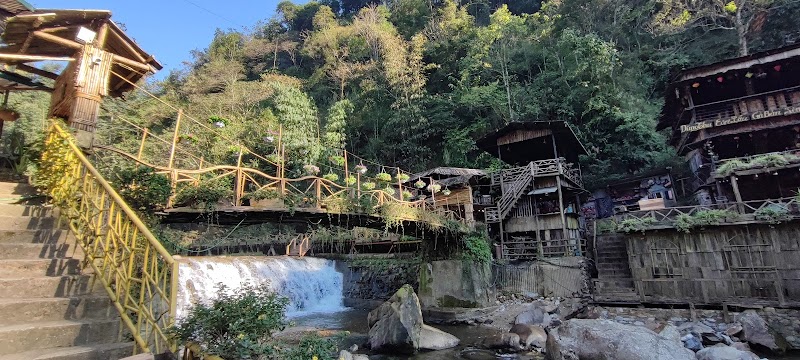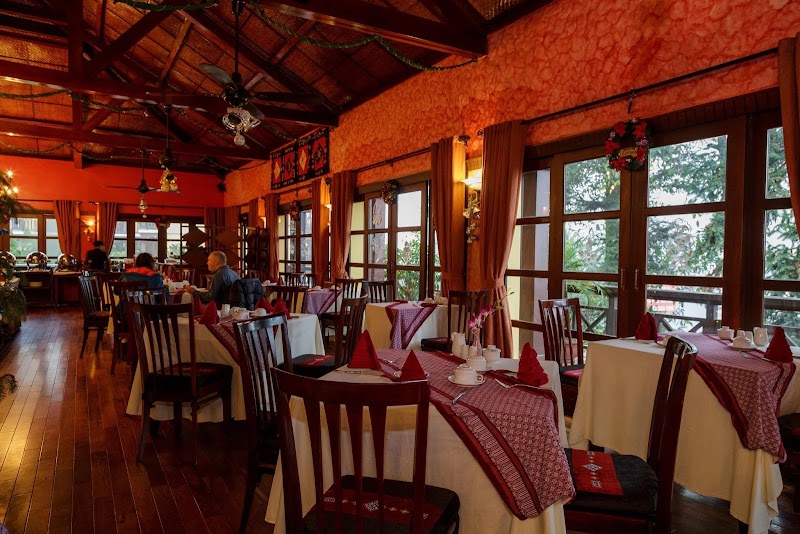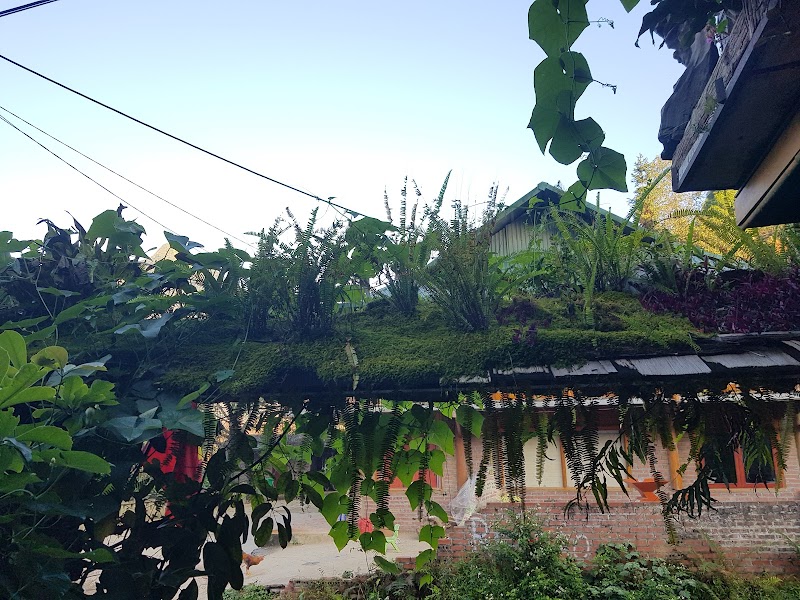Introduction
Imagine a place where the verdant hillsides are etched with 2,000-year-old rice terraces, creating a spectacular quilt of vibrant green. Welcome to Sapa and the Rice Fields of Vietnam, a mesmerizing landscape that is home to towering mountains, ethereal mists, and unique tribal cultures. Here, you'll encounter attractions like the terraced rice fields themselves, the enticing Silver Waterfall, and the distinct cultures of ethnic minority groups.
As you plan your journey, a comprehensive tourist map will be your guide. This invaluable tool will help you navigate the winding paths and hidden treasures of Sapa, ensuring you don't miss a beat of this breathtaking destination. With the map in hand, you'll be ready to discover the wonders that await in this corner of Vietnam.
Booking.comUnveiling the Wonder of Sapa and its Rice Fields
Engage in an exquisite journey through the remarkable landscapes of Sapa and its majestic rice fields, a destination that bursts with cultural richness and natural beauty. Let's dive into the top attractions awaiting your exploration.
- Experience the ethereal beauty of Heaven's Gate
- Immerse in the vibrant local culture at Ta Phin Village
- Take a refreshing dip in the Love Waterfall
- Behold the majestic Fansipan Mountain, the highest peak in Indochina
- Soak in the serene atmosphere of Old Church of Sapa
- Explore the bustling Sapa Market
Experiencing Heaven's Gate
Begin your journey at Heaven's Gate, a vantage point offering breathtaking panoramic views of the sprawling rice fields and verdant valleys below. The journey to the top is a thrilling adventure in itself, with twists and turns that navigate through the lush mountainous landscape. For a complete experience, use this tourist map of Vietnam to discover hidden gems along the way or plan a hiking route that takes you through some of the most scenic spots in Sapa.
Immersing in Ta Phin Village
Next, delve into the vibrant local culture at Ta Phin Village, where the Red Dao and Black H'mong ethnic groups reside in peace and harmony. Experience their unique traditions first-hand, from intricate embroidery techniques to traditional herbal baths. A visit here offers a fascinating glimpse into their distinct lifestyles, which have remained unchanged for centuries.
Connecting with Love Waterfall
Just a short trek from Ta Phin Village, you'll discover Love Waterfall, a hidden gem nestled amidst dense forests. Named for a local legend of star-crossed lovers, it's the perfect spot to unwind and soak in the tranquil ambiance. The cascading waters create a soothing melody, complementing the captivating natural beauty surrounding it.
Conquering Fansipan Mountain
The journey to Fansipan Mountain, fondly known as 'The Roof of Indochina', is an exhilarating experience that will reward you with unmatched panoramic views at its peak. Whether you choose to hike or take a cable car, the lush landscapes and cool mountain air make the journey as rewarding as the destination. On a clear day, you can even spot the terraced rice fields of Sapa from the summit.
Exploring the Old Church of Sapa and Sapa Market
Back in the town center, the Old Church of Sapa, a relic from the French colonial era, stands as a testament to the town's rich history. Its stone architecture, stained glass windows, and the serene courtyard offer a peaceful retreat from the bustling market nearby. Just a few steps away, the Sapa Market buzzes with activity, offering a plethora of local produce, handicrafts, and traditional delicacies. It's the perfect place to wrap up your journey, immersing yourself in the vibrant local culture and bagging some unique souvenirs to remember your unforgettable adventure in Sapa.

Practical Information for Sapa and the Rice Fields, Vietnam
Transportation and Mobility
Reaching Sapa and its enchanting landscapes is a journey worth embarking upon. The overnight sleeper trains from Hanoi to Lao Cai railway station are the most popular mode of transport, offering comfort and convenience. From Lao Cai, a one-hour bus ride will whisk you away to Sapa town. Alternatively, you may opt for a direct bus service from Hanoi to Sapa, which takes about 6 hours. If you prefer a scenic drive, renting a private car offers the flexibility to stop and admire the stunning views along the journey.
Schedules and Prices
The overnight trains from Hanoi to Lao Cai run daily, with departures from Hanoi typically scheduled between 9 pm and 10 pm, and arrivals in Lao Cai between 5 am and 6 am. Prices for a berth in a 4-bed cabin range from $35 to $40. Direct bus services from Hanoi to Sapa operate frequently throughout the day, with tickets costing around $12 to $15. Private car rental prices vary considerably, starting from $70 per day.
Safety Tips
While Sapa and its surroundings are generally safe, it's important to exercise caution during your explorations. Always stay on designated paths when walking through the rice fields to avoid damaging the crops or accidentally stepping on a landmine, remnants from past conflicts. It's also advisable to carry mosquito repellent, wear sturdy shoes for trekking, and dress in layers as the weather can change rapidly.
Practical Recommendations
For the best experience in Sapa, timing is key. April to June is the planting season, offering lush green landscapes as far as the eye can see. Meanwhile, September to November is the harvest season, where the fields turn a captivating golden yellow. Both periods provide optimal conditions for photography. Ensure to respect the local culture and traditions, refrain from giving money or gifts to local children, and always ask for permission before taking photos.

Frequently Asked Questions about Sapa and the Rice Fields, Vietnam
Here are some additional queries you may have about exploring the rice fields in Sapa, Vietnam:
1. What is the best time to visit the rice fields in Sapa?
The ideal time to visit the Sapa rice fields is between September and October, when the rice is ripe and harvest season is in full swing. During this period, the terraced fields are covered in a vibrant golden hue, offering breathtaking views. However, if you prefer greener landscapes, the months from June to August are also a good option, when the fields are lush and verdant.
2. What kind of clothing should I pack for a trip to Sapa’s rice fields?
Given Sapa's mountainous terrain and varying weather conditions, it's recommended to pack layers for your trip. Breathable clothing, a waterproof jacket, sturdy hiking boots, and a hat for sun protection are essential. Don't forget a warm jacket, as temperatures drop significantly in the evenings.
3. Are there any local customs or etiquettes I should be aware of when interacting with the tribal communities in Sapa?
Respecting the local culture and customs is an essential part of any travel experience. In Sapa, always ask for permission before photographing local people or their homes. Try to learn a few basic Vietnamese phrases as a sign of respect. Additionally, when exploring the villages, it's best to use local guides who can provide culturally sensitive insights.
4. Are there any special delicacies or food items that I should try in Sapa?
Sapa is known for its unique culinary offerings influenced by the local tribal cultures. Some must-try dishes include 'Thang Co', a traditional soup made from horse meat and organs, and 'Com Lam', sticky rice cooked in bamboo tubes. The locally brewed rice wine, known as 'Ruou Can', is also worth a try.
5. Are there any special festivals or events that take place in Sapa?
Sapa hosts several vibrant festivals that reflect the rich cultural tapestry of its ethnic minority groups. The 'Tet Nhay' festival of the Dao Do people in January and the 'Roong Pooc' festival of the Giay people in February are particularly noteworthy. These events provide a unique opportunity to experience the local culture firsthand.
6. Are there any health considerations or precautions I should take when visiting the rice fields in Sapa?
Ensure you're well-prepared for the physical demands of hiking in Sapa's terraced fields. Keep yourself hydrated, use sunblock, and carry a basic first-aid kit. Insects can be a nuisance, so remember to pack insect repellent. If you have any specific health conditions, consult with your healthcare provider before planning your trip.

